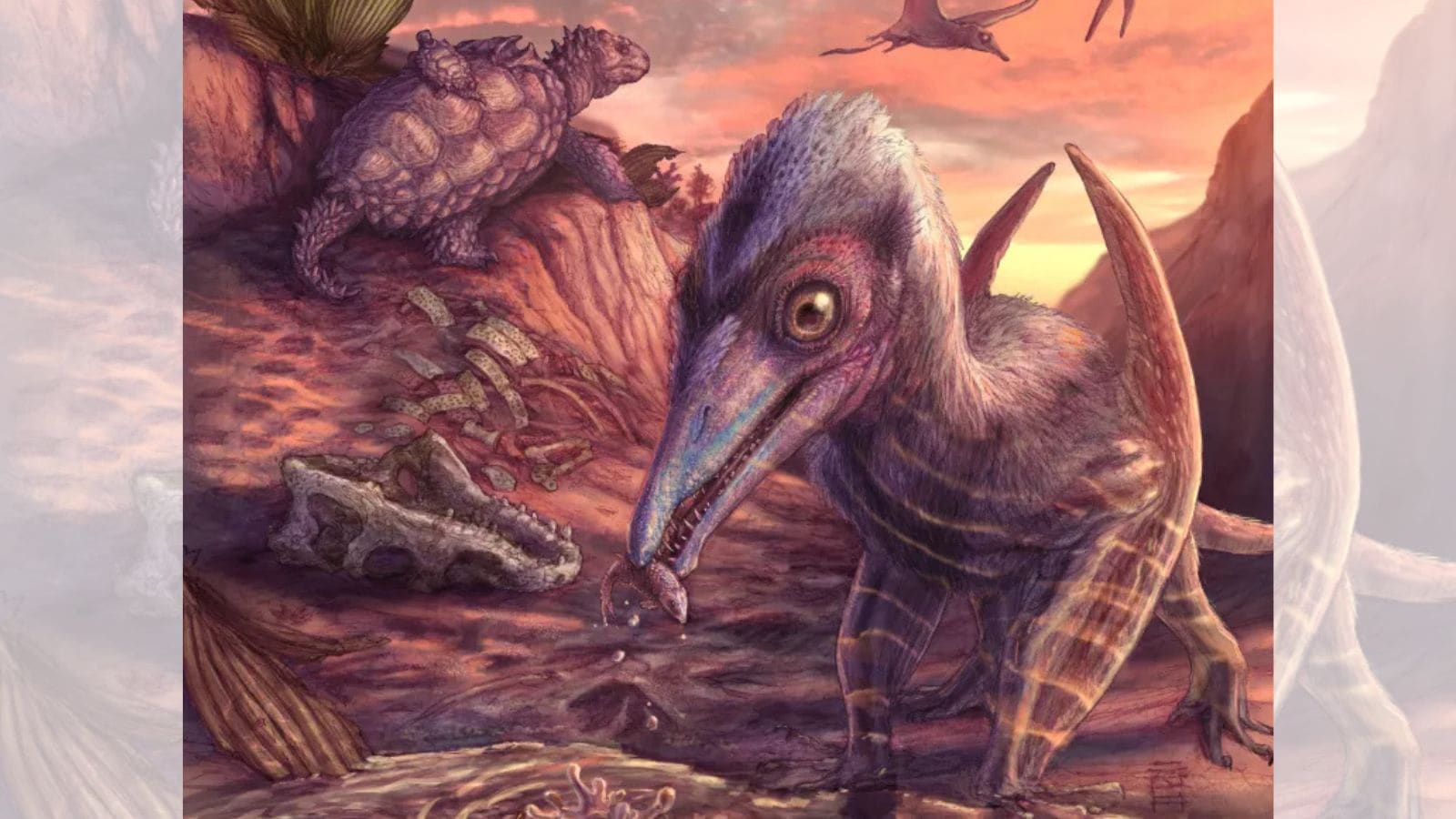Science
Related: About this forumScientists discover 200-million-year-old flying reptile species
The large flying reptiles known as pterosaur preyed on primitive fish that would have hard scale armour covering them.
By: Science Desk
New Delhi | Updated: July 10, 2025 10:21 IST

The discovery has been identified as a new reptile species by the scientists who had earlier discovered a part of its jaw in 2013. (Image: Smithsonian Magazine)The discovery has been identified as a new reptile species by the scientists who had earlier discovered a part of its jaw in 2013. (Image: Smithsonian Magazine)
Nearly 200 million years ago, large flying reptile species or pterosaurs, used to fly above dinosaurs. Scientists discovered the jaw of a pterosaur in Arizona sometime in 2013; however, now they have ascertained that it is an entirely new species. They made this discovery with the help of modern scanning technology.
“The bones of Triassic pterosaurs are small, thin, and often hollow, so they get destroyed before they get fossilised,” Dr Kligman told the BBC. The site area was a riverbed more than 200 million years ago; scales, bones, and other signs of life were progressively trapped and preserved by layers of sediment.
The reptile species has been named as Eotephradactylus mcintireae which means “ash-winged dawn goddess”. The volcanic ash is said to have preserved the reptile’s bones on the ancient riverbed. The creature was named by a team of researchers from the Smithsonian’s National Museum of Natural History in Washington, DC.
Experts predict that the fossil of the pterosaur is 209 million years old and currently believe it to be the oldest pterosaur to be discovered in North America. The jaw of the pterosaur is just one part of the collection of fossils found in the archaeological site; the fossils include bones, teeth, fish scales, and even fossilised dung (which is known as coprolites).
More:
https://indianexpress.com/article/technology/science/scientists-discover-200-million-year-old-flying-reptile-species-10115684/
BWdem4life
(2,827 posts)AllaN01Bear
(27,835 posts)eppur_se_muova
(40,450 posts)"Eos" was* the Greek goddess of the dawn, and "eo" is a common prefix for "early". The rest of it's unfamiliar to me, but those two boo-boos are glaringly obvious -- "pterodactyl" means "wing-finger", reflecting the structure of their wings, and every 10yo dinosaur gnurd knows that.
"mcintireae" obviously honors someone named McIntire (which translates as "son of carpenter", so no out there), possibly the owner of the land on which the fossil was found, or a fossil collector, a preparator, or even just a colleague -- all traditional forms of respectful acknowledgement in paleontology.
Anyone with a little authority in the classics is welcome to correct me.
*Still may be, for all I know. Not my bailiwick.